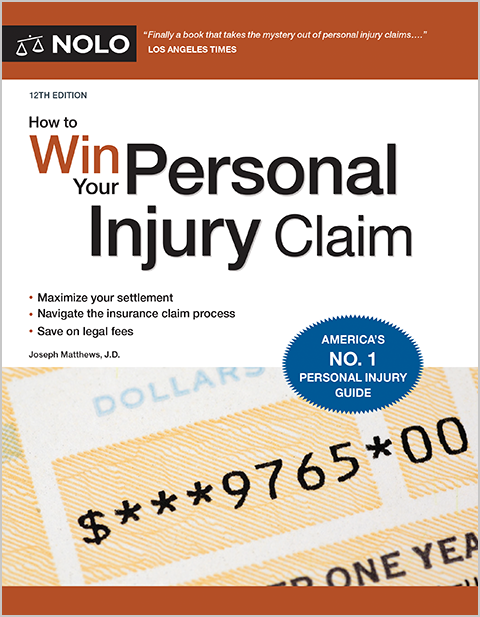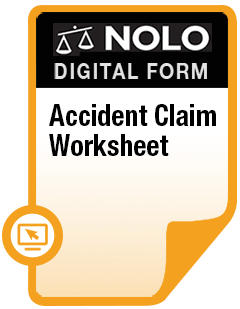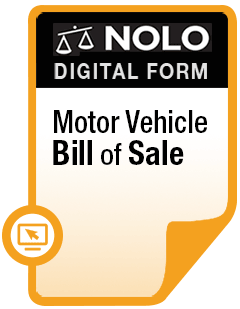The basics of Ohio's "financial responsibility" rules, how insurance comes into play after a car accident, and more.
Ohio drivers are required to demonstrate their financial responsibility for any car accident they might cause, and most do this by buying car insurance that meets the state's minimum liability coverage requirements:
- $25,000 for the injury or death of one person (a passenger, another driver, pedestrian, etc.) in an accident you cause
- $50,000 total for all injuries or deaths resulting from a single accident you cause, and
- $25,000 for any property damage arising out of a single accident you cause.
What Is Ohio's Financial Responsibility Law?
Ohio vehicle owners aren't technically required to carry car insurance, but you can't legally drive in the state unless you've demonstrated (and have proof of) your financial responsibility for other people's losses in case you're liable for a car accident. You can do this by:
- purchasing a cash bond (called a "FR bond)
- posting collateral, or
- buying liability car insurance.
If you choose to buy liability car insurance, as most Ohio drivers do, you need to meet the minimum requirements (25/50/25) detailed in the introduction.
According to the Ohio Department of Insurance, drivers in the state can choose one of the following alternatives to buying auto insurance, when it comes to complying with the financial responsibility rules:
- getting a Bureau of Motor Vehicles certificate showing that $30,000 (in cash or government bonds) is on deposit with the state treasurer
- getting a $30,000 certificate of bond issued from the BMV, signed by two individuals who own real estate with equity of at least $60,000
- getting a $30,000 bond from an authorized surety or insurance company, or
- for owners of more than 25 vehicles, getting a certificate of self-insurance issued by the BMV.
Is the Minimum Required Liability Coverage Enough in Ohio?
It may be a good idea to carry more protection in Ohio, since the minimum coverage requirements can easily be exhausted, especially if you cause a serious accident resulting in significant car accident injuries and vehicle damage.
If you're deemed liable for an accident and other people's losses ("damages") exceed the limits of your insurance policy, you'll be on the financial hook to pay the difference from your own assets. Having more liability coverage is one way to avoid this.
Who Is Covered Under Liability Car Insurance in Ohio?
Your liability coverage will kick in if any family member is driving your vehicle, or if you've given someone else permission to use it. It will likely also cover you if you get into an accident in a rental car.
Remember that the liability coverage we discussed here doesn't apply to your own injuries or vehicle damage after a car accident. You'll need different (additional) coverage for that if you're involved in a car accident and no one else's coverage applies to your losses. For example, in Ohio, medical payments coverage can be used to pay your car accident medical bills, and collision coverage can pay for repairs to (or replacement of) your damaged vehicle after a car accident.
Can I Show Digital Proof of Car Insurance in Ohio?
Yes. You can carry your company-issued insurance card in your vehicle, in case you are asked to present it to an Ohio law enforcement officer during a traffic stop, or you can pull up a digital version of the card (or similar official digital documentation of your policy) on your phone or other device.
What Are My Claim Options After an Ohio Car Accident?
When you've suffered any kind of injury or vehicle damage after a car accident in Ohio, you could have a few options for getting compensation for your losses, including:
- filing a claim with your own car insurance company, regardless of who caused the accident, if you have medical payments coverage (for injuries) or collision coverage (for vehicle damage); in this situation, if the other driver is at fault, your insurance company will likely turn around and pursue a subrogation claim against that driver's insurance company
- filing a third-party claim directly with the other driver's insurance carrier (if the other driver is clearly at fault) and negotiating a car insurance settlement, or
- filing a personal injury lawsuit in civil court against the at-fault driver; note that the other driver's liability car insurance will still be in play in a lawsuit, and the case could reach a settlement at any point before trial.
Note: In no-fault car insurance states, claimants don't have this same range of options. Ohio drivers don't need to worry about no-fault when it comes to in-state accidents. But Ohio is bordered by three no-fault states (Kentucky, Michigan, and Pennsylvania) so if you end up getting into a car accident across the state line, you may be playing by a different set of rules.
What Happens If I Drive Without Insurance in Ohio?
In Ohio, if you're caught driving without a liability insurance policy and without other accepted proof of financial responsibility, you can expect to face any of the following penalties, among others:
- suspension of your driver's license for up to 90 days (and up to a full year for a repeat offense)
- impoundment of your vehicle and/or your license plates
- a reinstatement fee of $75 to get your driver's license back (up to $500 for a repeat offense), and
- the requirement that you show proof of compliance with insurance/financial responsibility laws.
Getting Help After an Ohio Car Accident
If you've been involved in a car accident in Ohio, you might be looking for more than just basic information on the car insurance rules in the state. Especially if you've been seriously injured in a crash, it might make sense to discussion your situation, and your options, with an experienced legal professional. Get more details on when you might need a car accident lawyer.



